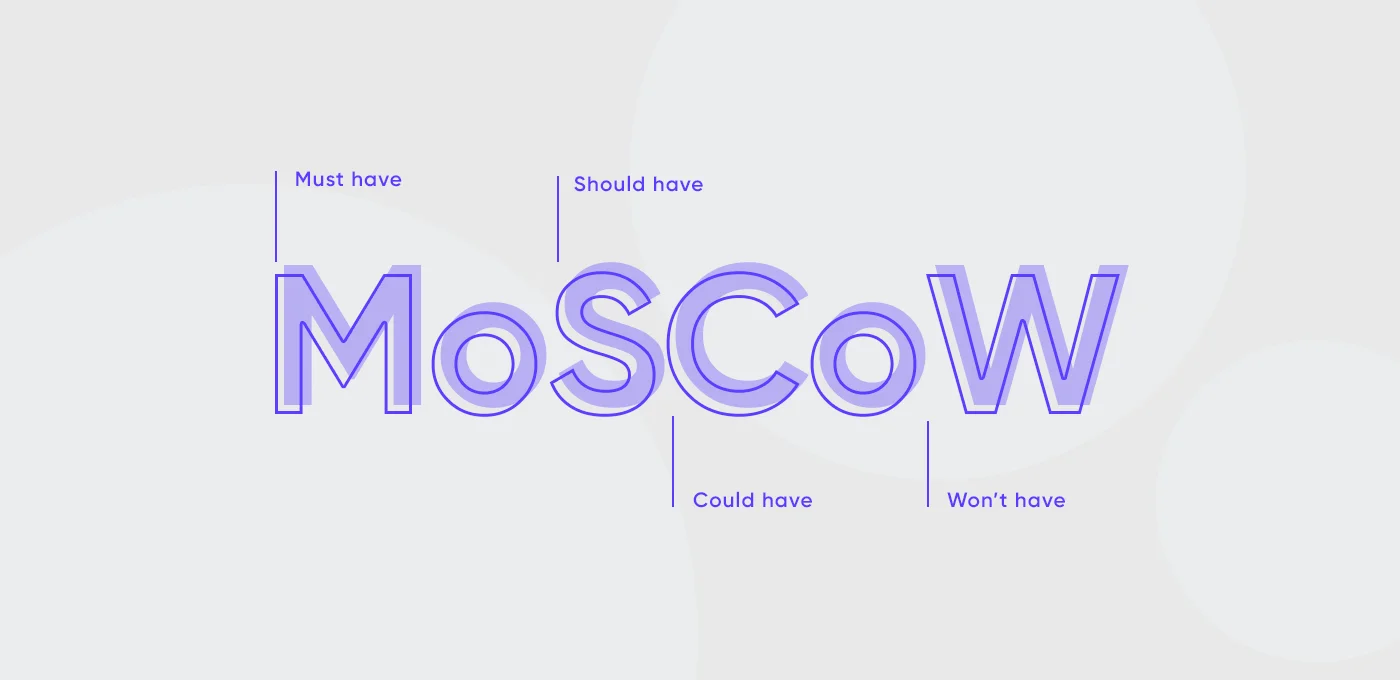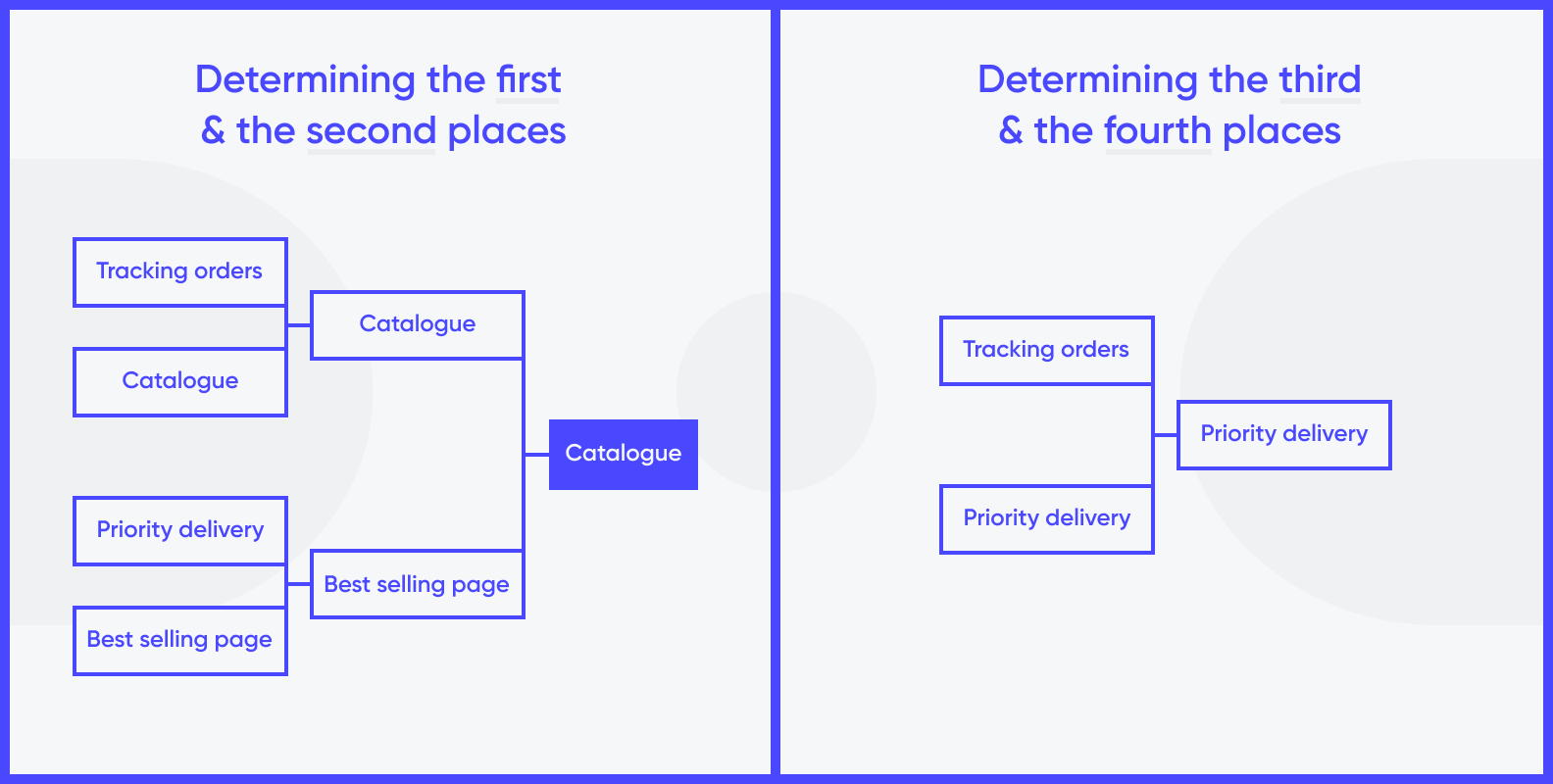


Among many other successful businesses, Foursquare started as an MVP with a single feature. At the start, users could only check in at places and earn badges. Although simple, this MVP helped Foursquare prove the concept and gain popularity. The MVP approach has since grown more popular and become one of the staples for startups. But what features are crucial for your own MVP? Deciding on it is a work in itself. However overwhelming it may be, prioritizing MVP features is very important. This guide from our MVP development agency gathers 4 techniques that will help you easily determine what comes first and what can wait.

MVP stands for a minimum viable product, and its primary role is to test business ideas. Minimum signifies simple, clear, and viable which means that customers should benefit from it. The main purpose of this stage is to gather feedback from users about the product.
Long story short, your final product is a glazed, sprinkled donut. To check the idea and test the recipe, you create a basic model — a plain donut. The dough is key, and if it does not taste good, the toppings will never help. Therefore, give the plain donut to your friends and neighbors and ask for their valuable feedback to see what you can improve.

Developing an MVP consists of several stages:
1. Define primary functionality. That is to say, make a list of features that your MVP will have. For example, for their MVP, Spotify had only one — music streaming.
2. Make an app or a website with determined features. Here, Purrweb is at your service.
3. Test your idea on a real audience, gather feedback and identify the areas you need to improve.
4. Review MVP features you need to add or adapt and start the process again. Repeat until your app becomes market-ready and satisfies users’ needs.
Deciding on MVP features is especially significant as it serves as the foundation of the whole product. It takes clearing the vision and putting your best foot—features, in this case—forward. So let’s focus on your MVP features and how to prioritize them. Whether you already have a list of features in front of you or just figuring them out, the four following techniques will ease the decision-making.
To begin with, there are no recommendations on how many features an MVP should have — as long as each of them meets users’ needs. We suggest four techniques that will ease the selection process.
User Story Mapping is a method of recreating users’ journey through your product, from opening an app to solving their problem. To choose your MVP features using this method, follow these 5 steps:
1. Define benefits. What is the principal goal of the product that distinguishes you from a competitor? The answer should be no longer than one sentence. Let’s take donuts as an example again. The primary goal is to make customizable donuts with great, chewy, velvety dough and have them delivered contact-free.
2. Recreate the journey. Be inventive, put the customer first, and think about distinct steps and scenarios. For instance, to buy a donut on our app-to-be, a user goes through 5 stages: browsing, providing address and delivery instructions, managing orders, paying, and delivering.
3. Write down the MVP features for each step. For successful browsing, you need a catalog or sprinkles and fillings, a search bar, a customization page, best sellers (for those who can’t decide), etc. Providing address and delivery instructions requires a built-in map and various text fields. To pay, your users need different options—pay with Debit/Credit Card, with Apple Pay, with Google Pay, or with PayPal. For delivering, you need an estimation of time and a tracking system.
4. Rank MVP features in each step from must-haves to won’t-haves. The primary criteria are to what extent it will help to finish the purchasing process and how often your clients will use it. Let’s say that browsing the catalog and the customization page are the most important features for the idea, while best sellers are not a crucial feature yet. For delivering features, an estimation of time can be deemed more important than the tracking system.
5. Map the MVP. After you have ranked everything, the number 1 features in each step are must-haves for your MVP. Second and third place are nice-to-haves, and if you feel you need it for testing—feel free to include it in the MVP.
After the final step, you will get an MVP features list. Not only will it indicate the essential functionality for the first version but also a plan for further updates.
Another approach is the MoSCoW prioritization technique. It allows you to easily divide all possible MVP features into 4 categories.

First of all, you and your team need to determine the primary criteria for prioritization — it can be the customer’s benefits, development complexity, cost, etc.
All features in the ‘must have’ category will be in your future MVP. And though features that you ‘should have’ are not vital, you may need to work around them in the development stage. ‘Could have’ functionality can be added to the MVP if time and budget allow extra features. Finally, ‘will not have’ can be ruled out. For now.
This method is especially effective if you already have a list of features for your MVP that you need to organize. Feature by feature, you will compare functionality and decide which is more important and which is less. Through multiple March Madness-style ‘matches’, the most crucial feature will become victorious. Download or design a single or double-elimination March Madness bracket and fill it with all the MVP features. Afterward, gradually eliminate the ‘losing’ feature and move the ‘winning’ feature forward in each pair. If you are using a single elimination bracket, repeat the process with the features you didn’t compare in the first round.
Let’s say that as our MVP features example, we have four possible options. Above is what the choosing process will look like for the donut delivery MVP in a single elimination bracket.
As you can see in the charts, the results are in: the champion of the MVP features is… Catalog! The second and third places are reserved for the bestsellers page and tracking orders, respectively. And the last one out of the four features is priority delivery. Better luck with other MVPs?

March Madness-style process may take longer, but you can make it a team-building activity. Fill the brackets of MVP features with your teammates and compare them or draw one on a whiteboard and discuss matches together.
This method is more of a wild card and can be used to determine your MVP’s best assets and highlight potential advantages over competitors. It is a survey-based approach, so it may take time to find subjects. Here’s how it works:
1. Find your app’s potential users. It can be your friends and family, a dedicated focus group, or a research panel. Remember that their feedback would be relevant and beneficial if they are interested in your final product. For the donut delivery app, for example, choose those who order takeout regularly and are fond of sweets.
2. Create an online survey or interview your subjects. Ask them what features are the most important in the product you are working on. They also need to score them. Your audience may indicate the estimation of delivery and assign it 5 points out of 5. That means that this is one of the most important features.
3. Ask your potential users to rate each of the features in existing apps. How satisfied are they with this function? Here, you might learn that your competition is struggling to provide an accurate estimation of delivery time. That means your audience scored this function in other apps as 1 point out of 5. It means that this is one of the lowest features in users’ satisfaction.
After the survey or interview process, point out the high-importance and low-satisfaction features. In our example, it is the estimation of delivery time. Those features are opportunities for your startup to stand out and win over the audience. Consider including them in the MVP for early user recognition. The time of development for these features will probably pay off.
World-shaping apps are not created overnight. Moreover, premature scaling can cause a startup to fail. Some analysts claim it can amount to 70% of all startups failing. The underlying factor is market fit which is hard to achieve without enough trial and error.
Product-market fit is when a business has customers and can efficiently satisfy their wants and needs. It constitutes the market need for a product and is one of the elements of success. Product-market fit ensures that there are people who will buy and use your materialized idea.
But the product-market fit isn’t set in stone. It can and will change with changes in the market. For example, Netflix started as a service that mailed DVDs. In order to stay relevant, they pivoted to online. So did Slack founders when they discovered it was their video game’s side project that had potential and not the original idea.
Chasing after a fully developed product and fast launch, many startup founders ignore the product-market fit. That can drain the resources on unnecessary features and lead to premature scaling. Consistent growth, on the contrary, requires investing resources gradually and paying early customers appropriate attention. That’s where the MVP approach comes in.
MVP as a startup launching stage has four major advantages:
Creating an MVP is exciting and challenging at the same time. Pick features for your project wisely using our techniques. And remember, quantity matters — the more insights you gather, the greater the chances for triumph.
Purrweb specialists are ready to be a part of your success story. We can offer you our extensive expertise in rapid MVP launching that keeps the focus on user experience. We developed a cryptocurrency e-wallet, an independent ecosystem for nightclubs, a pet health tracking app, and many more web services’ and apps’ MVPs.
You bring the vision. We bring the product. <a class="blog-modal_opener">Contact</a> the Purrweb manager to learn how your idea can turn into a successful MVP.